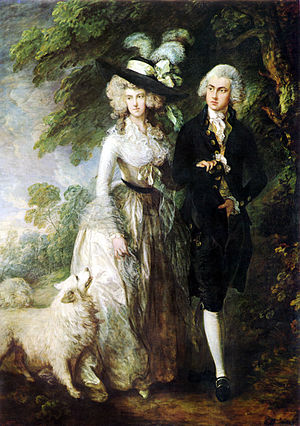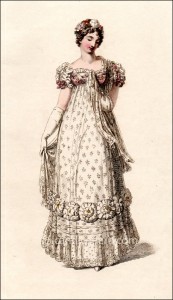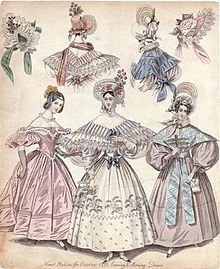There are lots of things in our daily lives that we don’t even think about – we just take them for granted – we assume, subconsciously, that they have always
existed, even though, academically, we know that’s not true. here are twelve things that did not exist yet in the Regency era – some that were just being invented, some that were more than a hundred years away! See if any of
them surprise you!
1. Street lights as we know them
For the most part, there were no street lights at all. Building owners might
hang out lanterns above their doors (and at some stages, there were laws requiring that in London), but mostly streets were dark at night, except for a small number of areas in London where gas streetlamps (which had each to be lit by hand each night) had been installed. Wider gas lamp use on streets did not occur until the 1830s at least.
2. Headlights
For a start, there were no cars, only carriages, and no electricity, so if a person wanted to drive their carriage at night, the only option they had was what was called ‘carriage lamps’. These were oil lamps, which sat in holders on the outside of the carriage, near the front at each side. they had mirrored interiors to create as much light as possible from the one small flame. But…. not much reach at all – basically, if you drove your carriage at night, you were relying on the fact that horses have rather good night vision.
3. Baby carriages/ prams
Oddly enough, no one had thought to create a wheeled vehicle for moving small children about yet. people were just beginning to consider it. In the mid 1700s, the first ‘child transporting devices’ (other than carrying a child in a sling against your body) were invented, and were basically miniature carriages, designed to be pulled by a dog, goat or very small pony. It wasn’t until the 1830s that models designed to be pushed by a human were made, and they did not take off in England until Queen Victoria used them for her children in the 1840s. So in the Regency era, all of those poor Nannies had to either carry the children, or somehow get them to walk with them, even when they were tiny.
4. Photographs
Whilst the concept of photographs was coming into existence, and it it thought that some images had been made on light sensitized paper before 1820, the first known photograph was in 1826, in France, and photos of people did not begin to happen until the late 1830s. So in the Regency era, if you wanted a picture of someone to carry with you, you had a painter paint a miniature portrait.
5. Refrigeration
In the Regency era, refrigeration was still almost entirely by the creation of ice houses. Huge blocks of ice were cut from high mountain areas, or from frozen rivers during winter, and stacked around the walls of cellars dug into the earth in cool, often damp, places (like close to rivers), then food and the like was stored in there. By the end of Summer, most of the ice would have melted, and there would be no cold storage until winter set in again, unless huge sums were paid to transport ice blocks from mountain areas. Scientists were, from the late 1700s, experimenting with chemical and mechanical refrigeration techniques, but they were not widely known or available. It would be the mid 1800s before that became possible. In my upcoming novel, ‘A Bluestocking for a Baron’, the hero owns ice houses as a business, and he, and the heroine, are investigating the new discoveries.
6. Antibiotics, painkillers and anaesthetics
Antibiotics were not discovered, as such, until the early 1900s, although it was known from long before that, that putting mouldy bread on a wound often improved the chance of the person healing. (that was, of course, because the mould on the bread was a penicillin mould). The people who knew this, however, tended to be battlefield surgeons, or women who were traditional healers – both of whose opinions were ignore by the famous physicians of the time. So getting injured, even in a seemingly minor way, was very dangerous, if infection set in. To add to the situation, there were no painkillers as we know them today. traditional healers used things like ground willow-bark (which we now know contains salicylic acid, which is the compound from which aspirin is made) to help with pain, but again, physicians spurned the traditional remedies. Anaesthetics did not exist yet either, although ether had been used experimentally for the purpose, but was not acknowledged for that use until 1846. So any operation had to be done with nothing to stop the pain (usually alcohol was given to the person, so that when the pain hit, they passed out rapidly.). Imagine how painful an amputation would be, or the removal of a bullet or arrow from a wound, with nothing for anaesthetic at all! And… nothing to ease the pains of childbirth at all…
7. Flush toilets (there were the first few…)
Whilst the concept of the flush toilet, and how one might be built, was described as early as 1596, it required water plumbed from an overhead cistern 0 which most houses did not have. It did not take as a concept, although some royal residences had early versions. Then, in 1775, an Englishman, Alexander Cumming, patented the idea of the S curve pipe on the outflow of such a device (which cut down the smells that could flow back out of the sewer. between that, and the expansion of the existence of actual sewer drains (rather than just a channel in the middle of the street), flush toilets were possible in the Regency Era – if you were fabulously wealthy and willing to risk such an odd new invention. So very few existed until the mid to late 1800s. Generally, during the regency era, toilets were either a seat over a hole that dropped into a pit in the earth, a chamber pot, which the maids had to empty and clean, or what was called a ‘close stool’ – which was a seat, in which a chamber pot was enclosed, which had a lid you could shut after you had used it. The maid still had to clean it out later…
8. Hay bales
The square bale of hay (and in the last 30 to 40 years, the round bale of hay), bound together by twine or wire, did not exist in the regency era. the machine that made the creation of such bales possible was not invented until the 1830s. During the regency, hay was still collected by hand, bound or stacked in ‘stooks’ and haystacks, and pitchforked onto wagons to transport it to either haybarns (barns were only for hay – stables were for horses, byres for cows, and pens for pigs) or to stables, where it would be again moved with pitchforks to where it was needed.
9. Trains (the first steam driven ones had just been invented)
The first steam train was actually used in 1804 in Wales, moving coal and the like for an ironworks. passenger and freight trains, near London and throughout Britain, did not start to become frequent until 1828. But the potential had been recognised. During the regency era, there were many companies working to put railways in place, and shares in those companies were a popular investment for the wealthy.
10. Any kind of air craft (even hot air balloons were just experimental then)
Most people know that airplanes were not created until the early 1900s. but we tend to think of hot air balloons as being around long before that. It is true that the first hot air balloon flight was in France, in 1783, but they were not used as transport, or in any regular way, for a long time after that. they were rather dangerous – no easy way to steer them, at the mercy of the winds etc. So during the regency, whilst they were known about, and there were even a couple of times when one was launched from the royal parks in London (with a great crowd watching on to see the amazing thing), they were not common at all for many decades after that.
11. Sewing machines
The first sewing machine was invented in 1790 – but it was a heavy device, designed for sewing leather and heavy canvas, not for sewing as we know it today. It was not until the 1830s that the first sewing machines designed for sewing clothing were made. Even though the industrial revolution had brought mechanical looms to the weaving industry by the regency era, the mechanisation had not stretched to the actual sewing of the fabric created yet. So all of the clothes made in the regency era were sewn by hand, by tailors and seamstresses, whose skill was remarkable, as was the speed with which they could create a garment. This meant, pretty much, that every garment was tailor made to exactly fit the person who ordered it. Some businesses had begun to ‘premake’ some garments for the lower classes (who did not care if they did not fit perfectly, so long as they could afford them), but those were still all hand sewn.
12. Washing machines
Washing machines are one of those things we don’t think about – but they were not invented, as we know them today, until the late 1800s. Even the metal washboard (a metal sheet with lots of bumps and slots to let water through, which the person washing rubbed their clothes up and down on, with some water and soap added to the garment) was not invented until the 1830s. There were wooden equivalents before that, and in large houses and laundries (which did exist as commercial things in some places) they had huge wooden or metal tubs, which were sometimes heated, and had water piped to them from overhead cisterns. The laundry maids either moved the clothes about in those with big wooden paddles, or occasionally they had a paddle on an axle, and it could be turned by a crank handle. But it was all driven by people. Most clothes were rarely washed (undergarments got washed the most, as they were usually plainer fabric, and would not be seen as they wore and stained), and many fabrics used for aristocratic clothing could not be washed, without the colour running, the garment going completely out of shape, or similar. So, if a dress got mud stained around the hem, it might be given to a maid, or sent for rags (rags were in demand, as paper was made from rags). This also meant that, especially in summer, clothing became rather strongly scented with the sweat of its wearer…
So… there we are, twelve things you probably did not know about the Regency era (and may not have wanted to know….). Did any of this surprise you? Let me know your thoughts.








